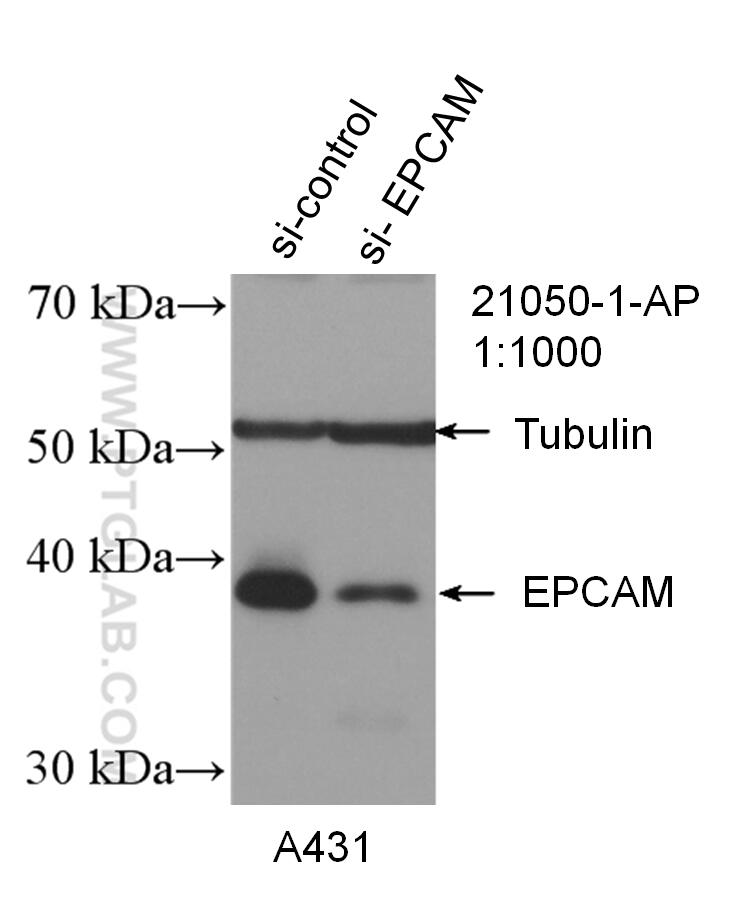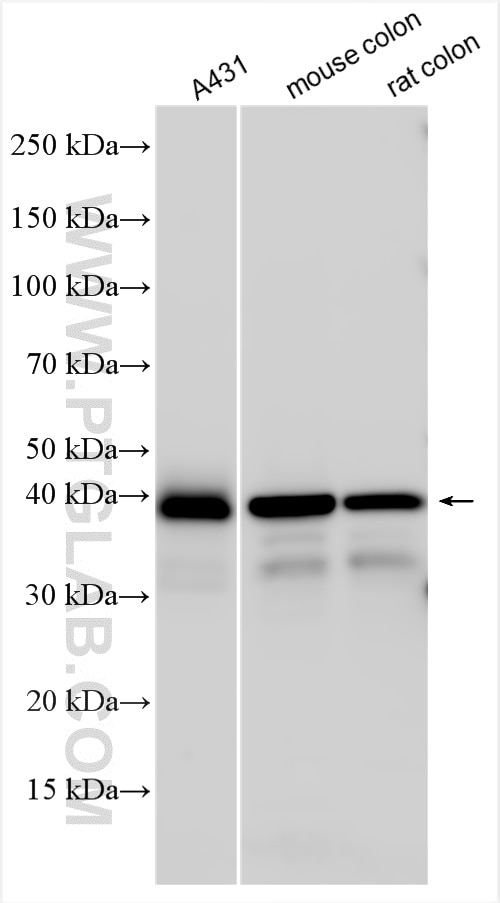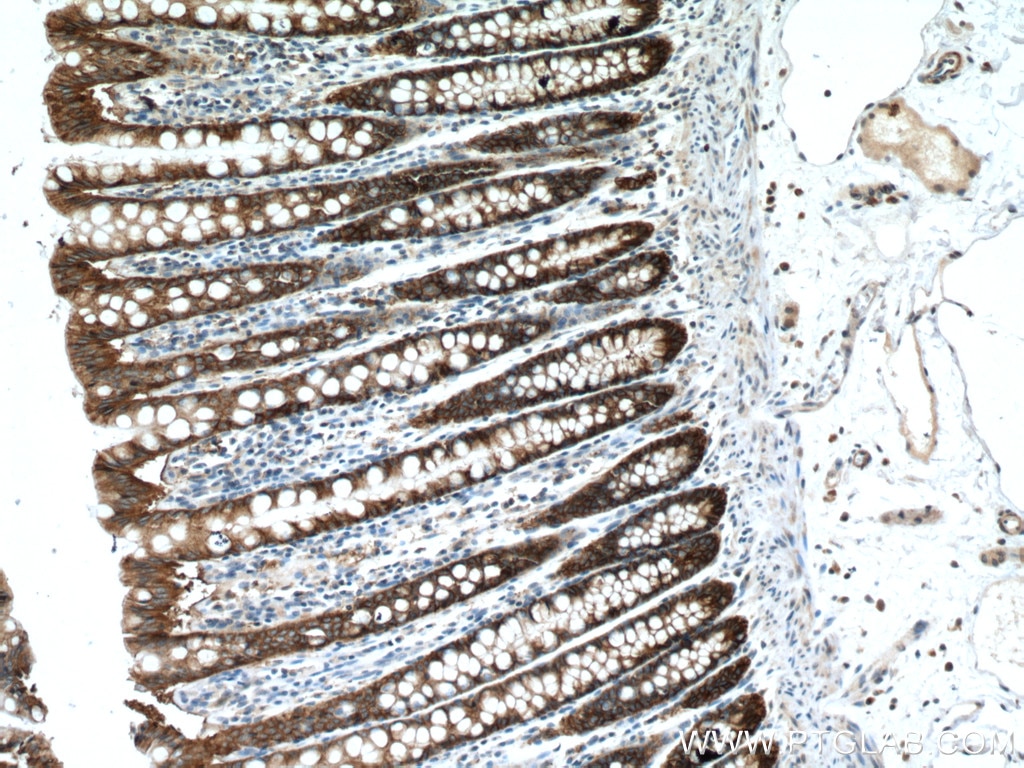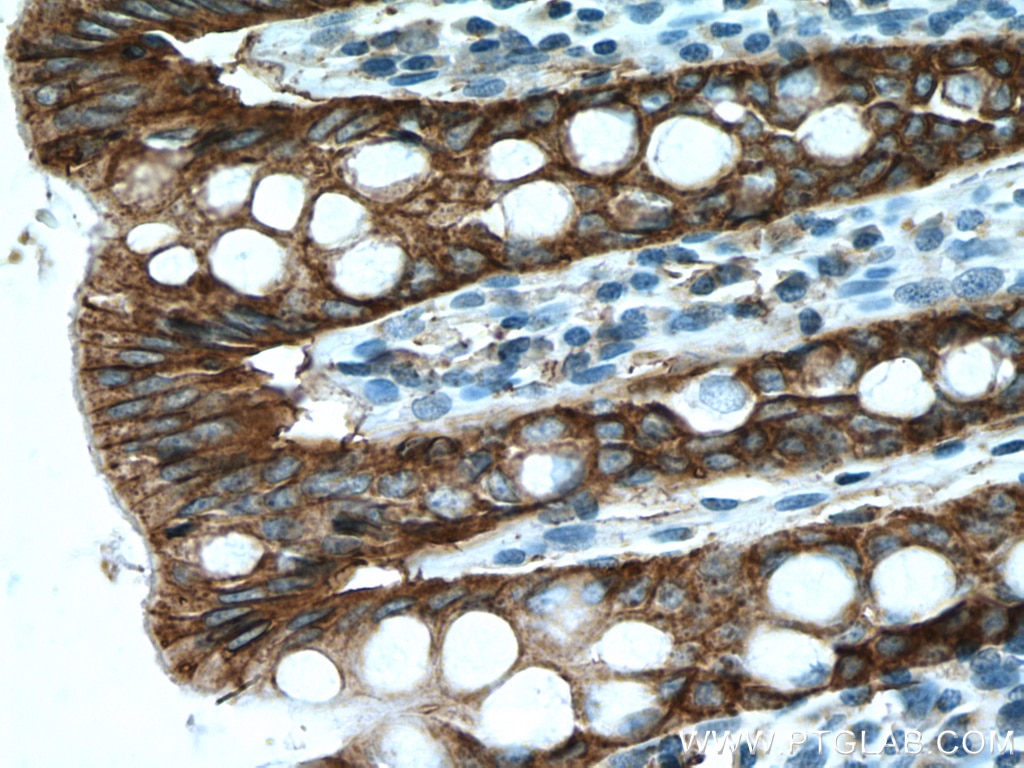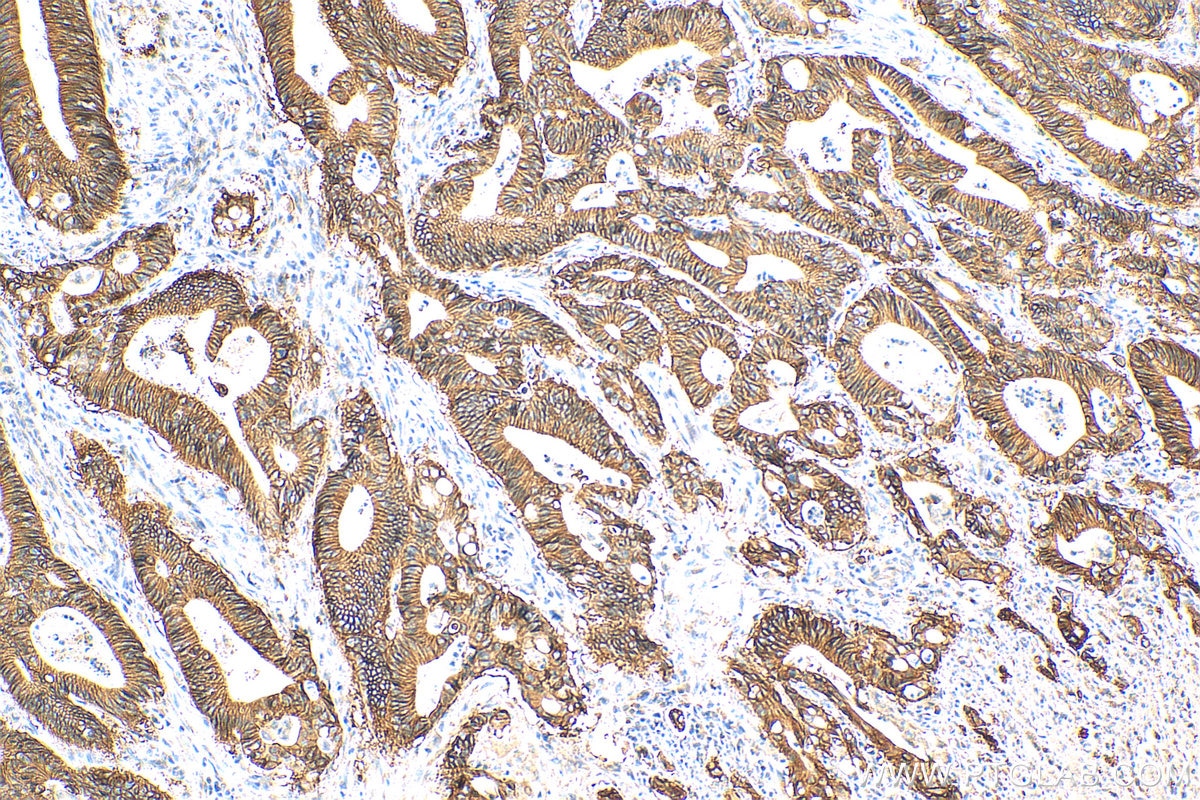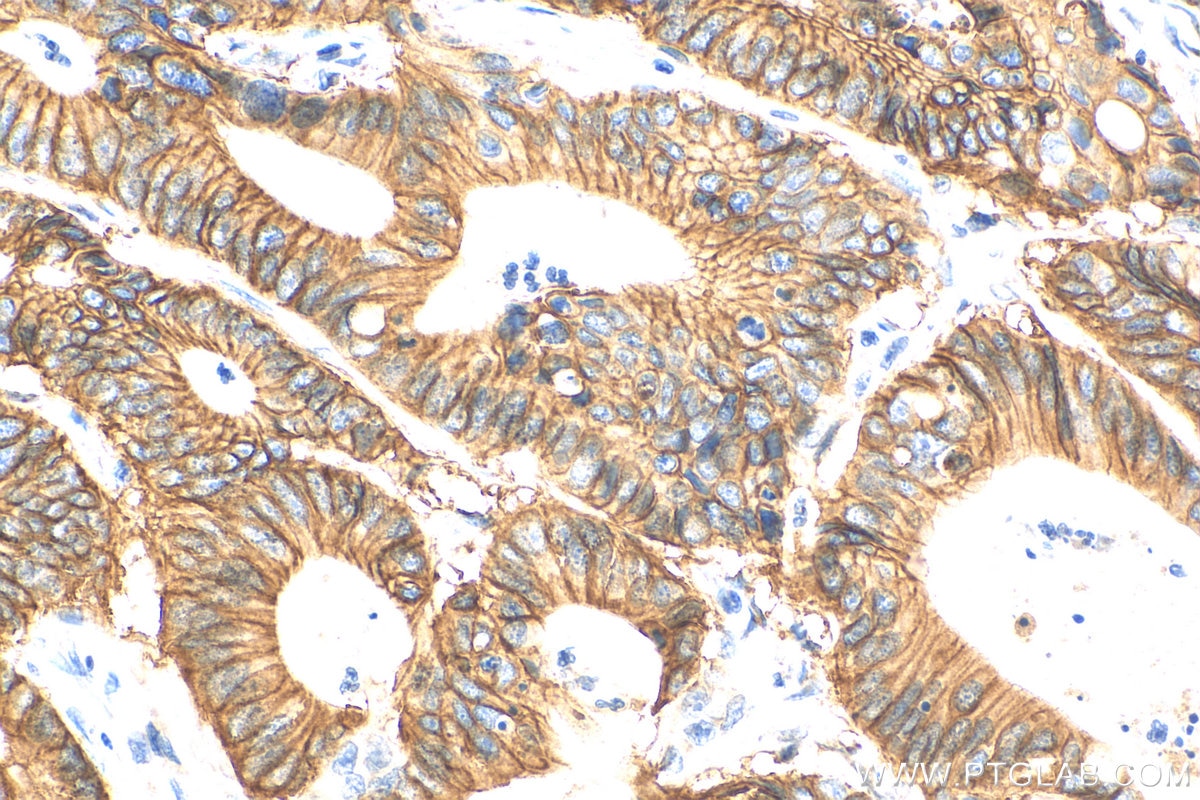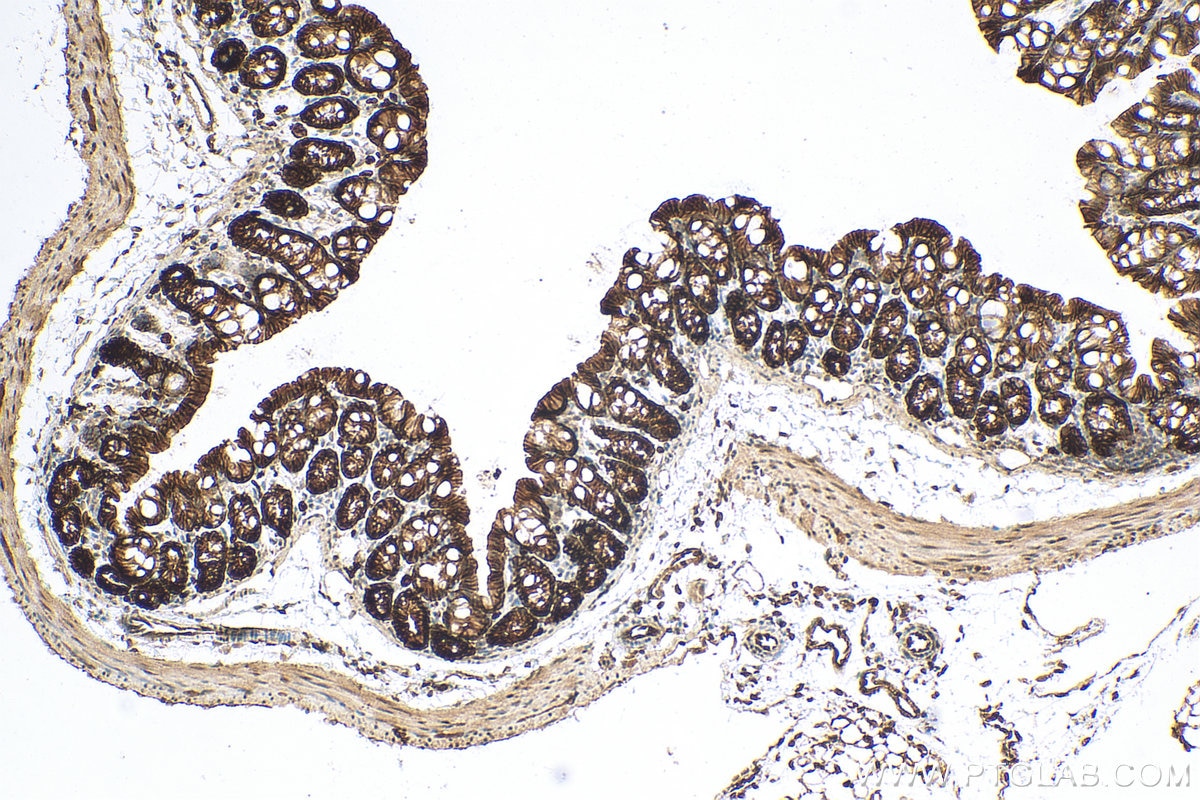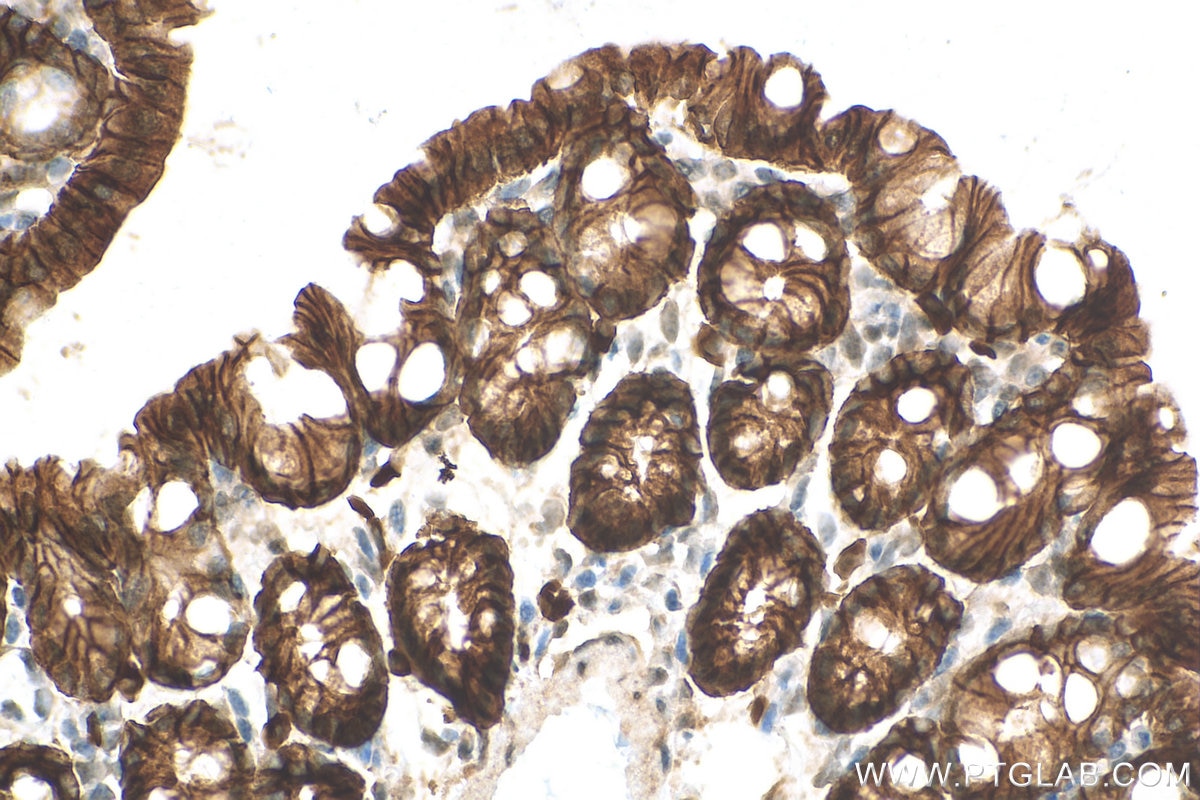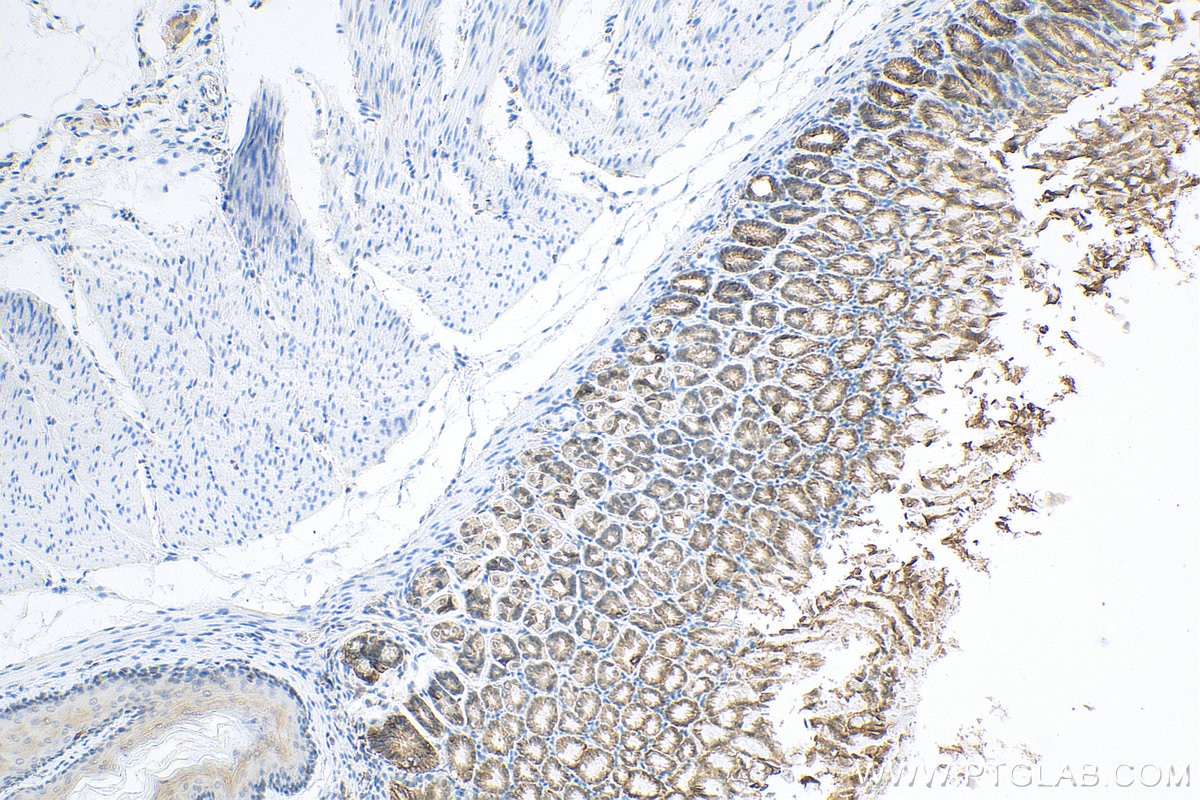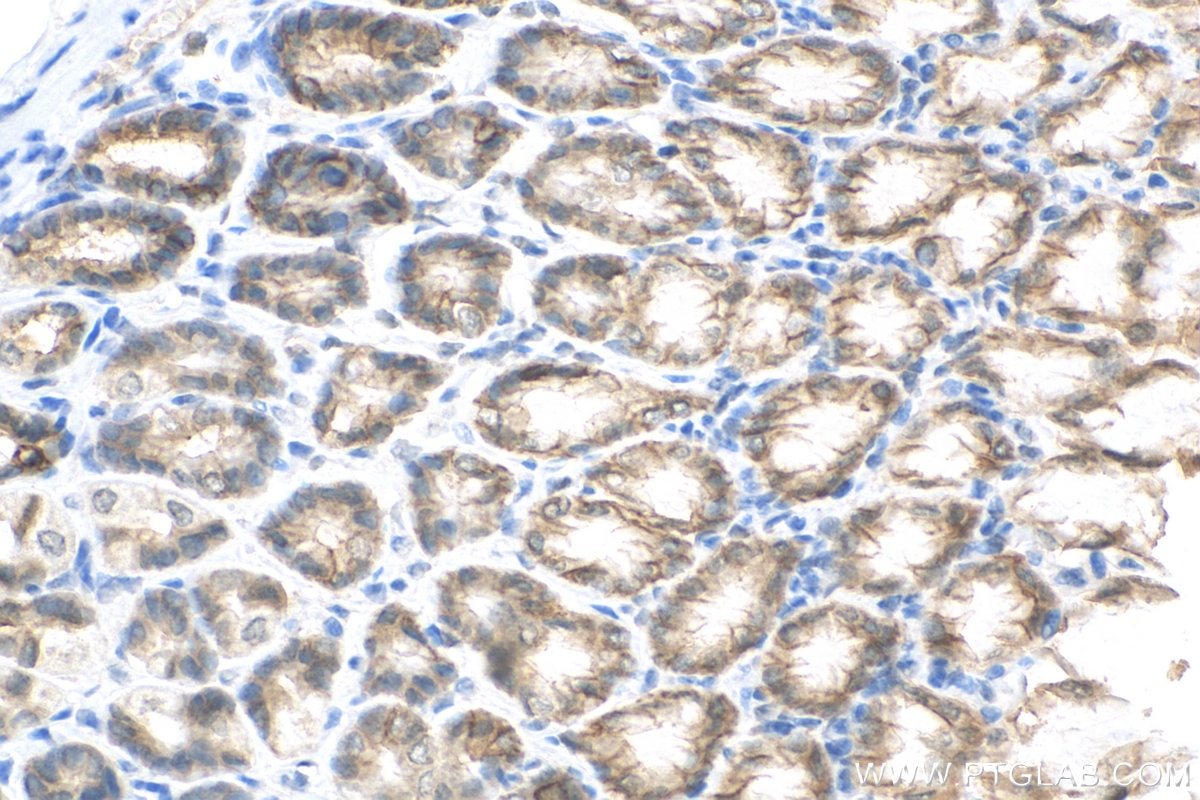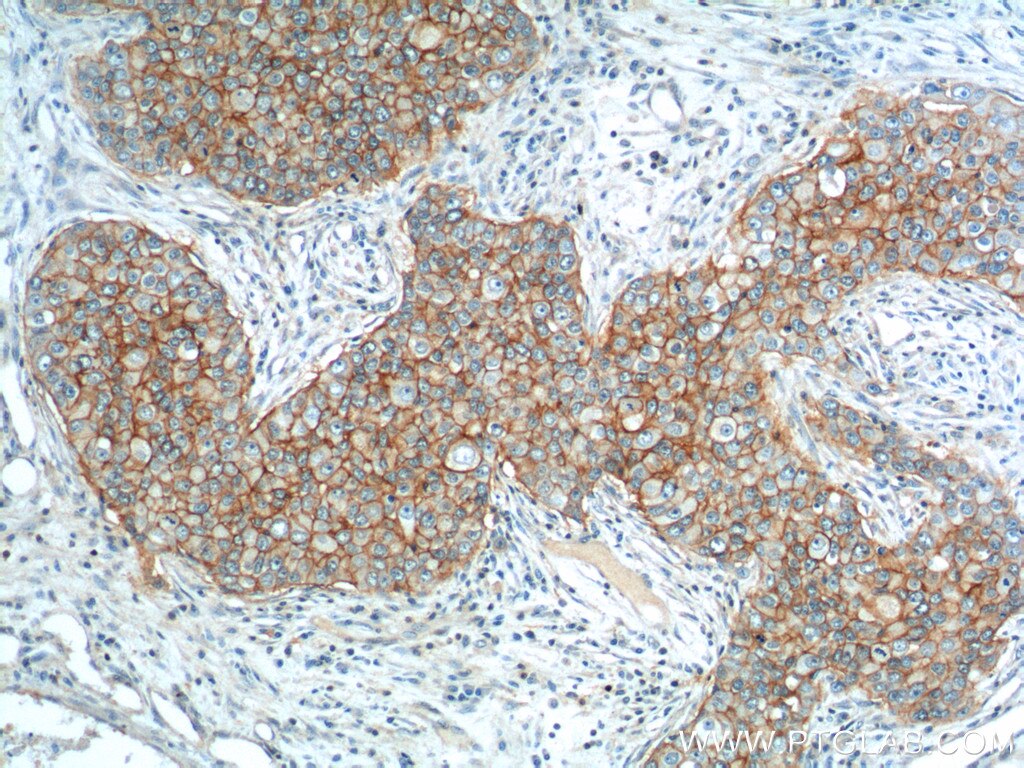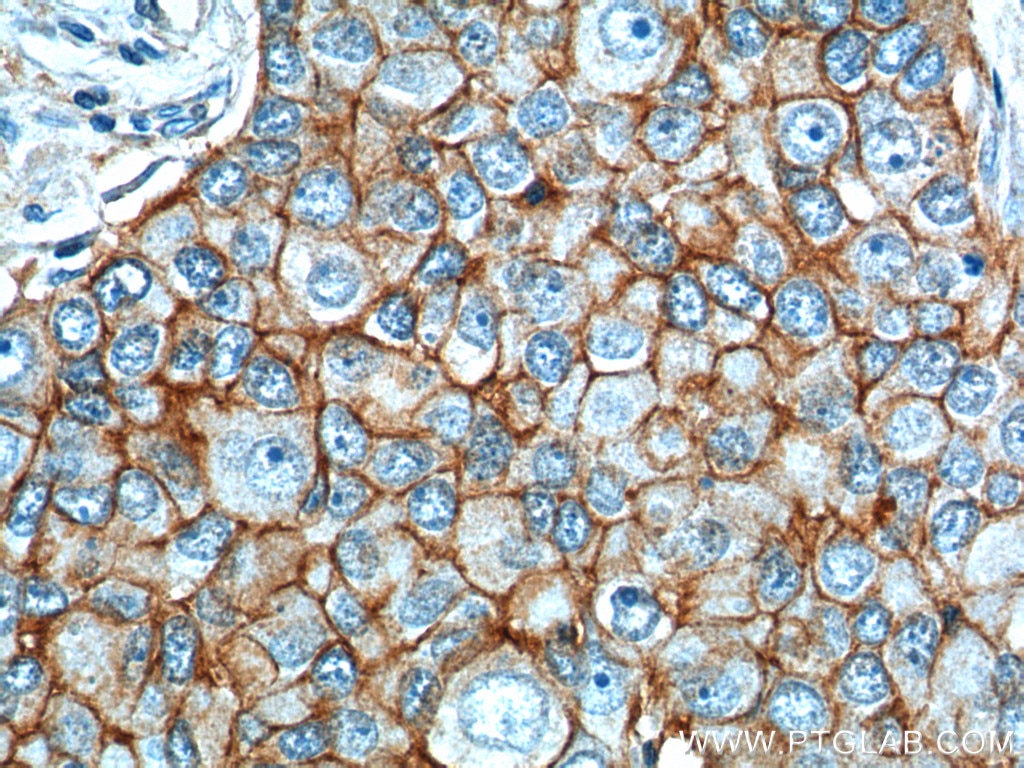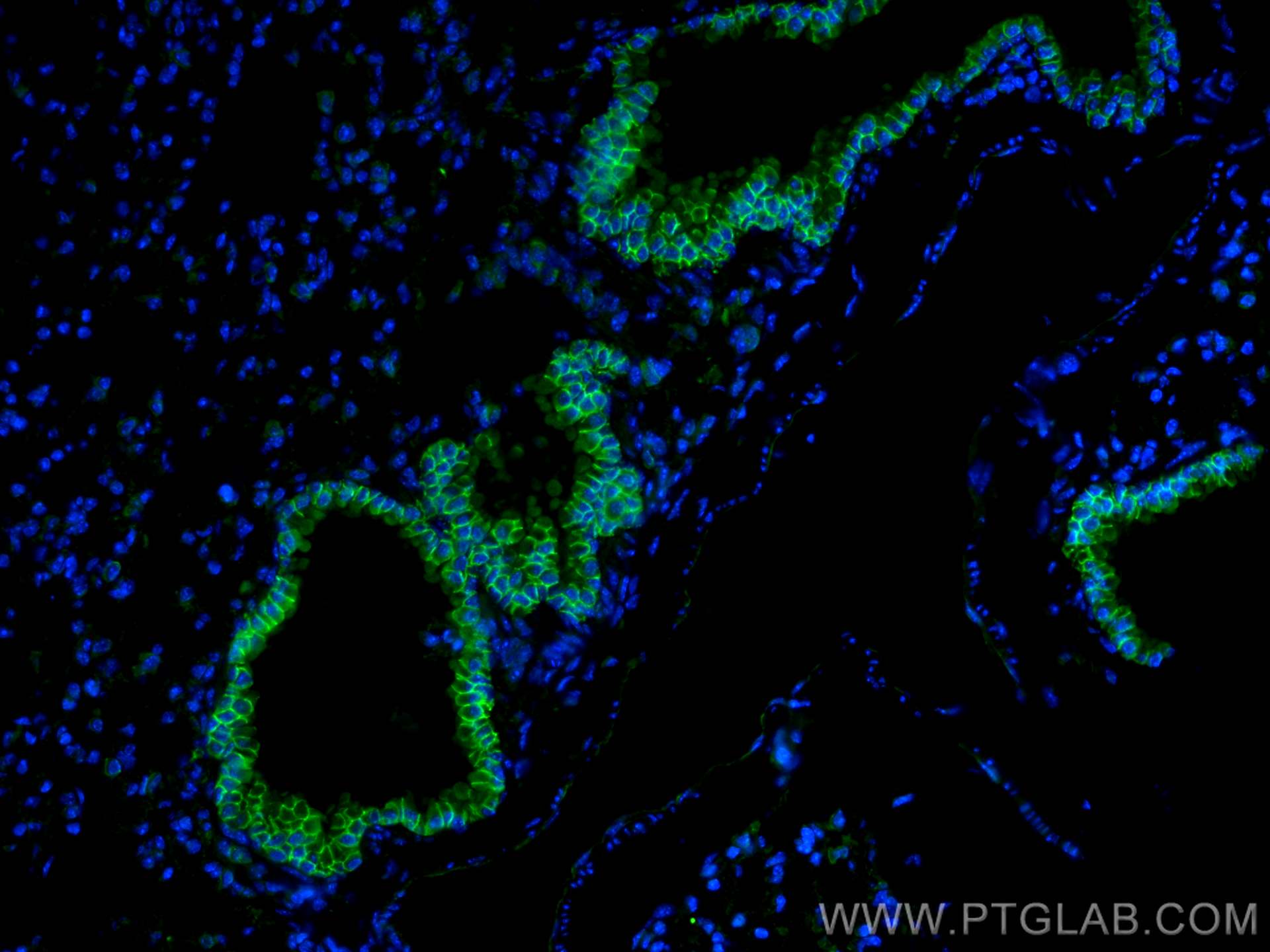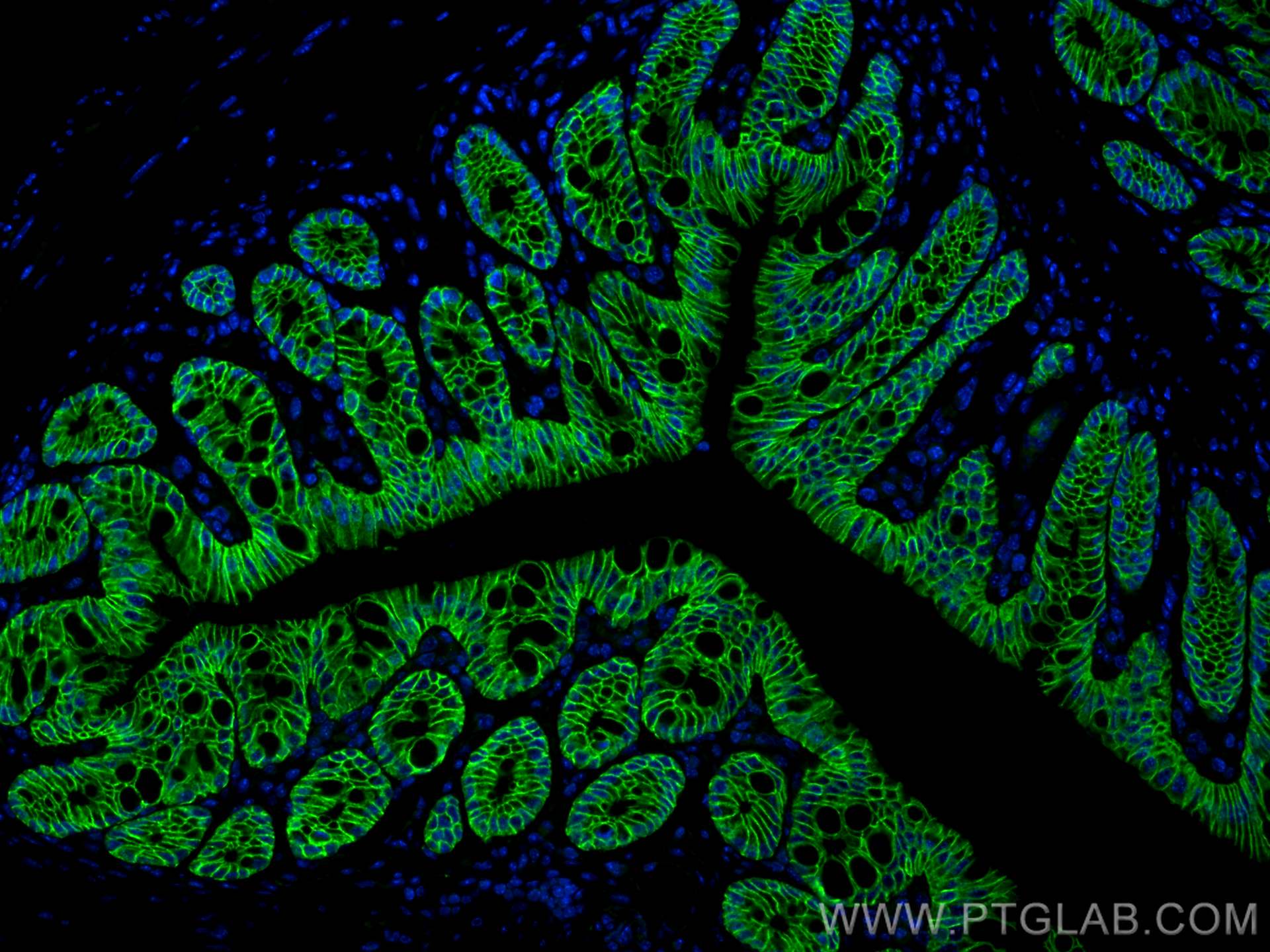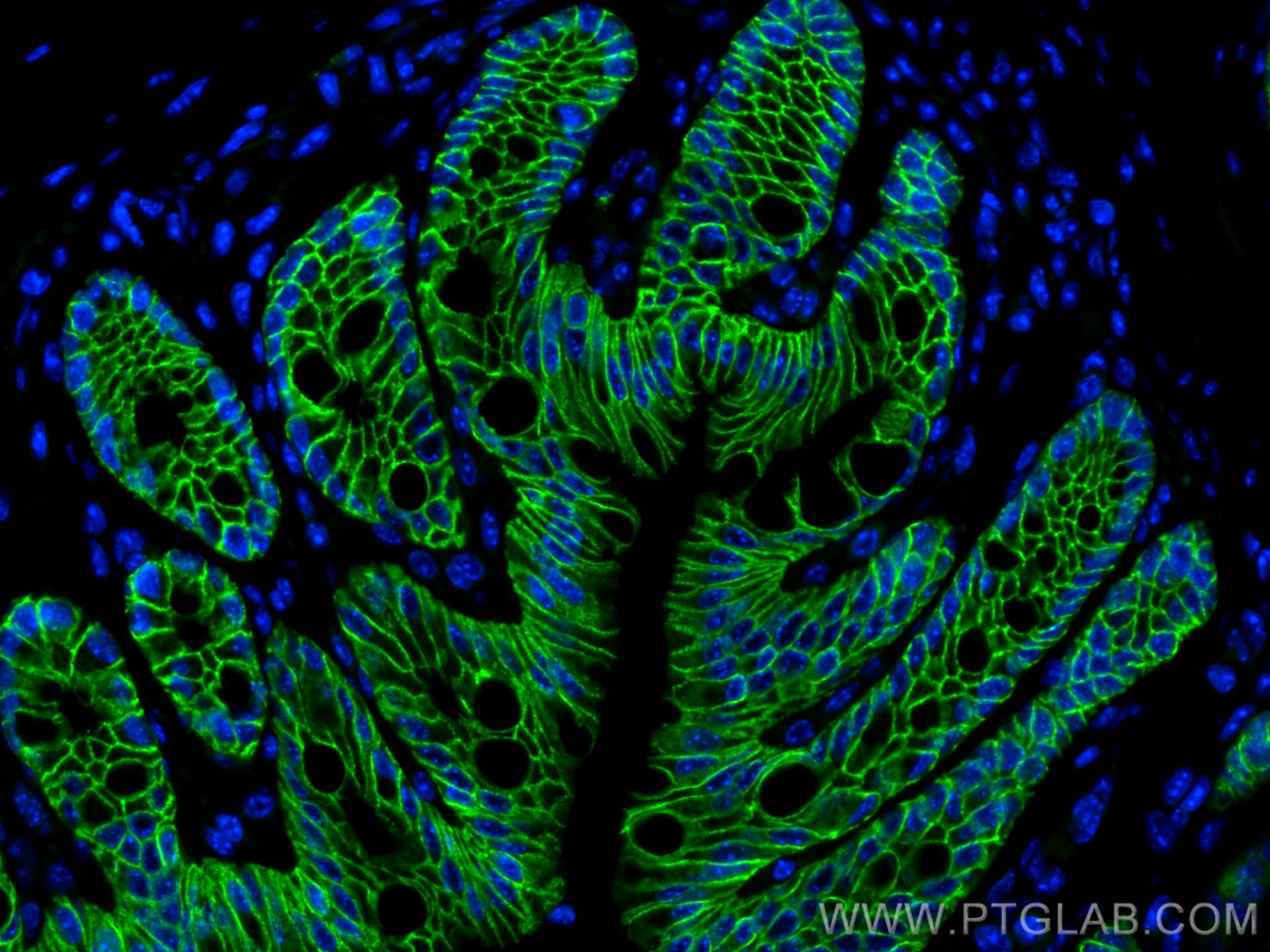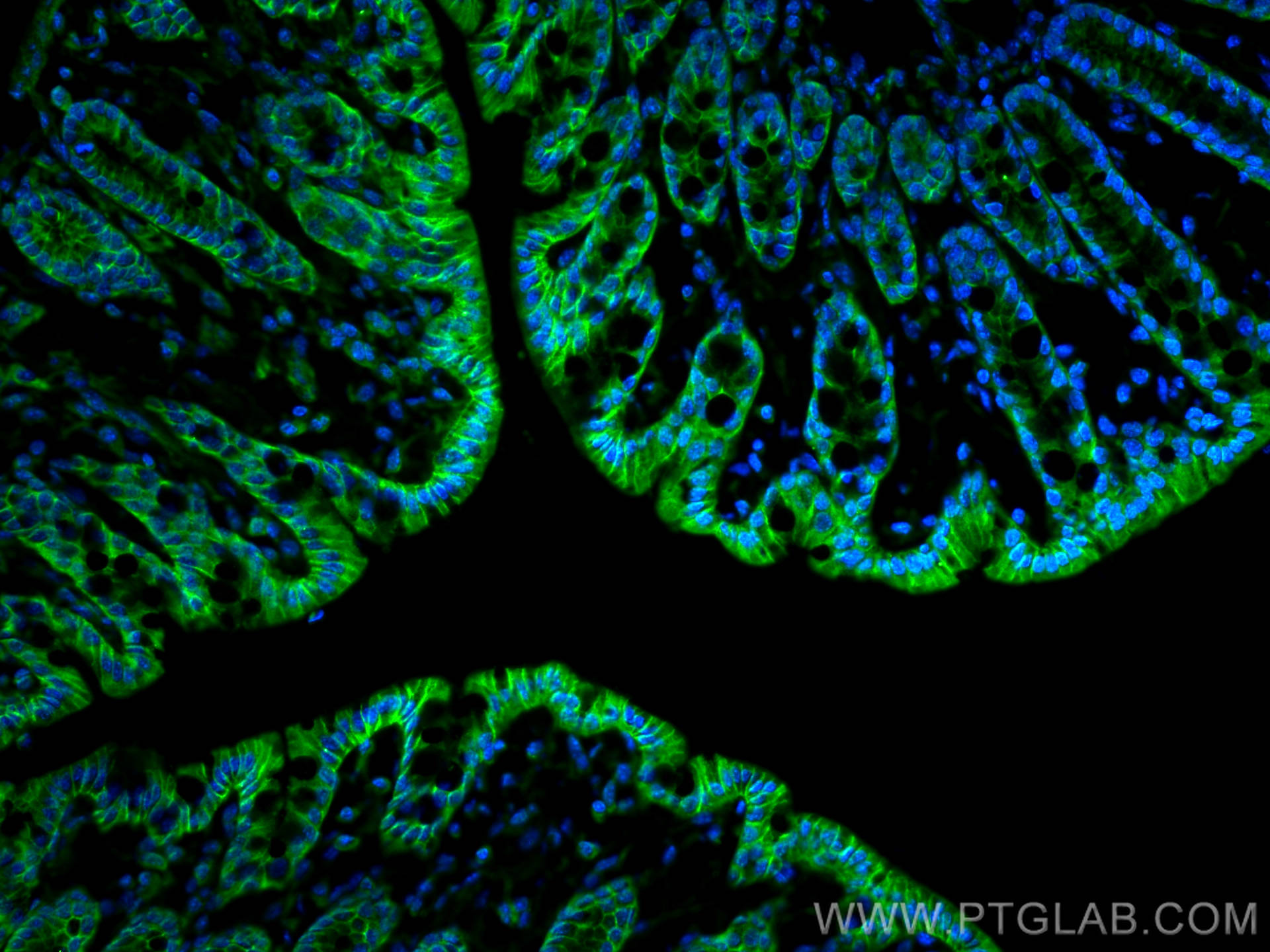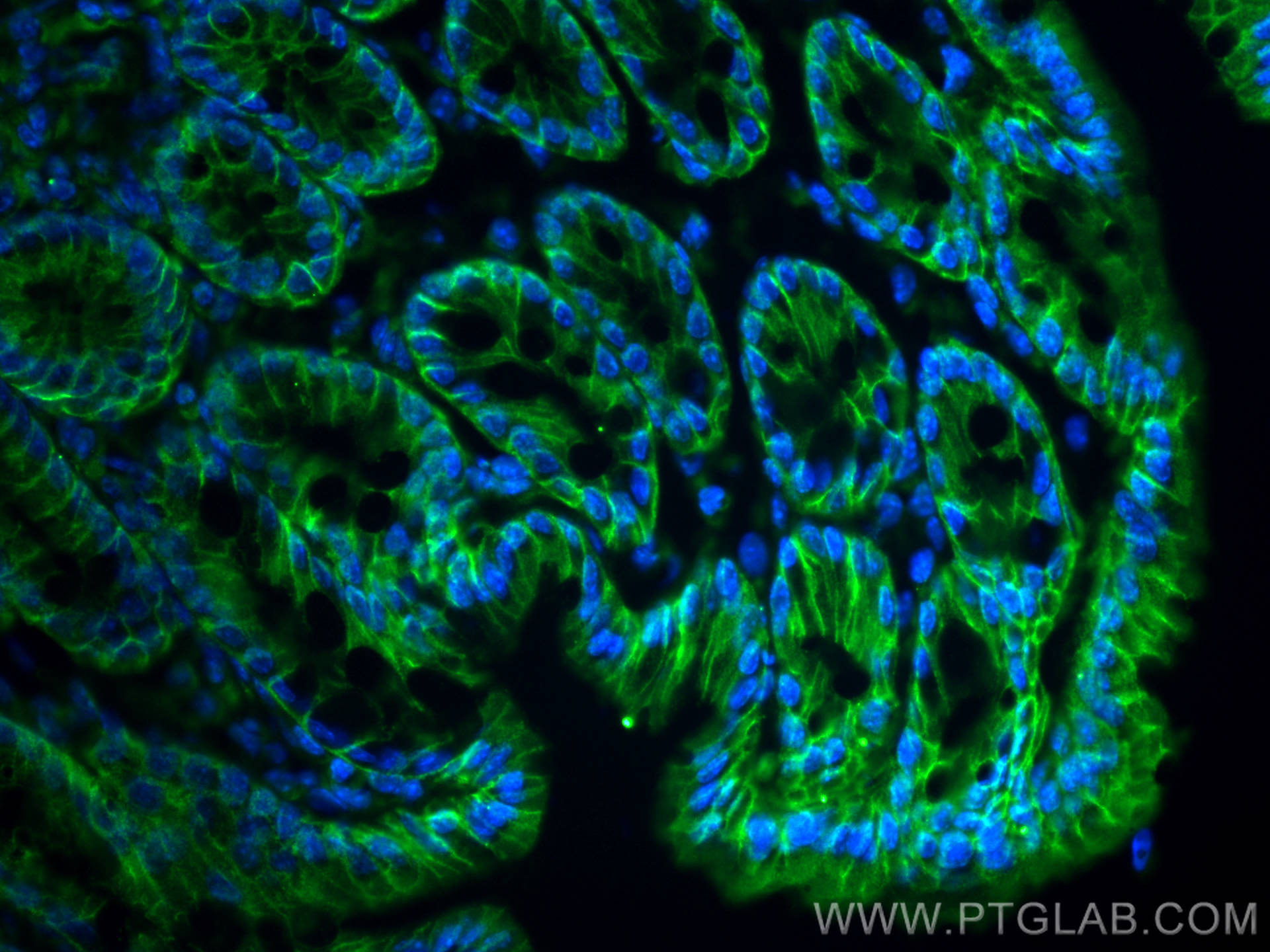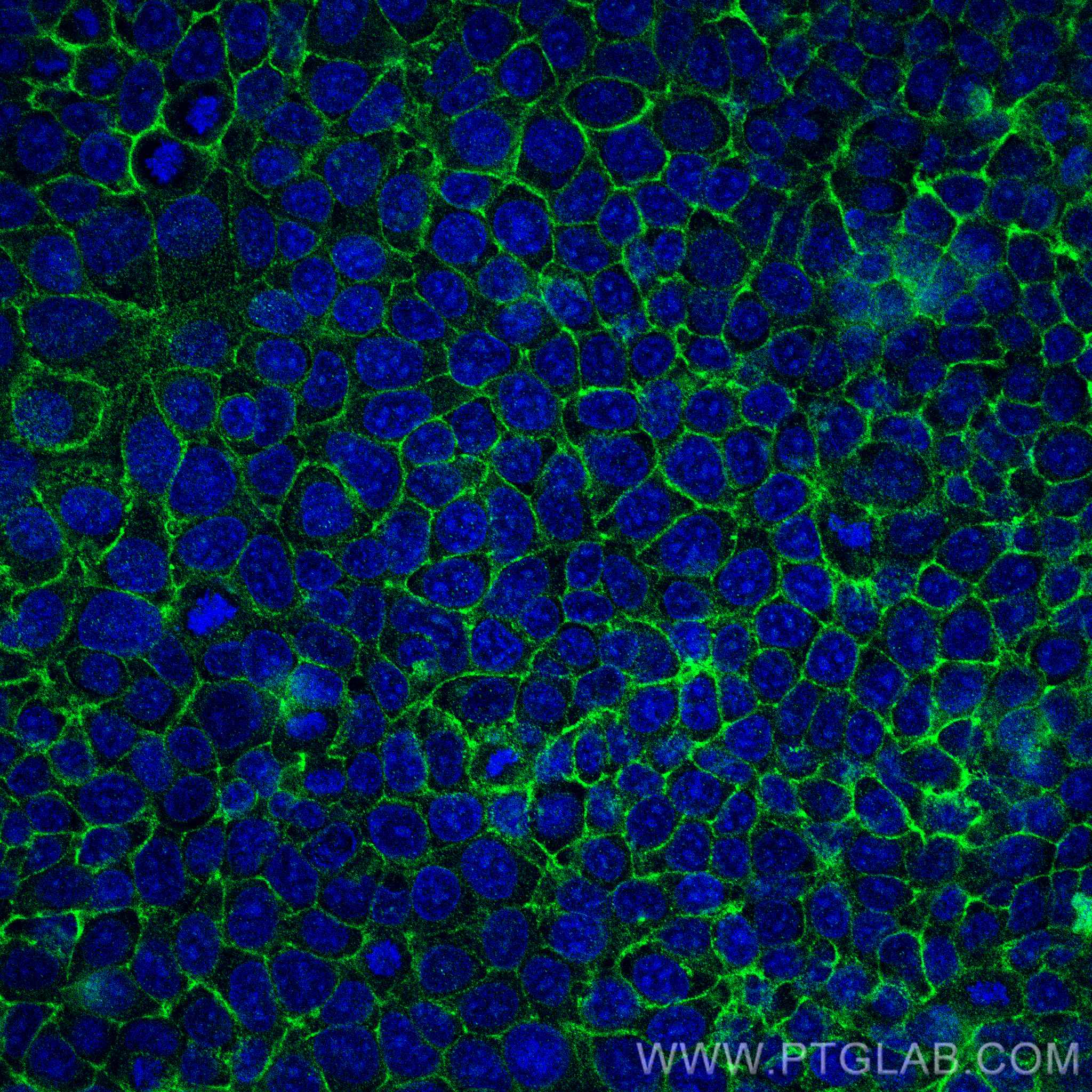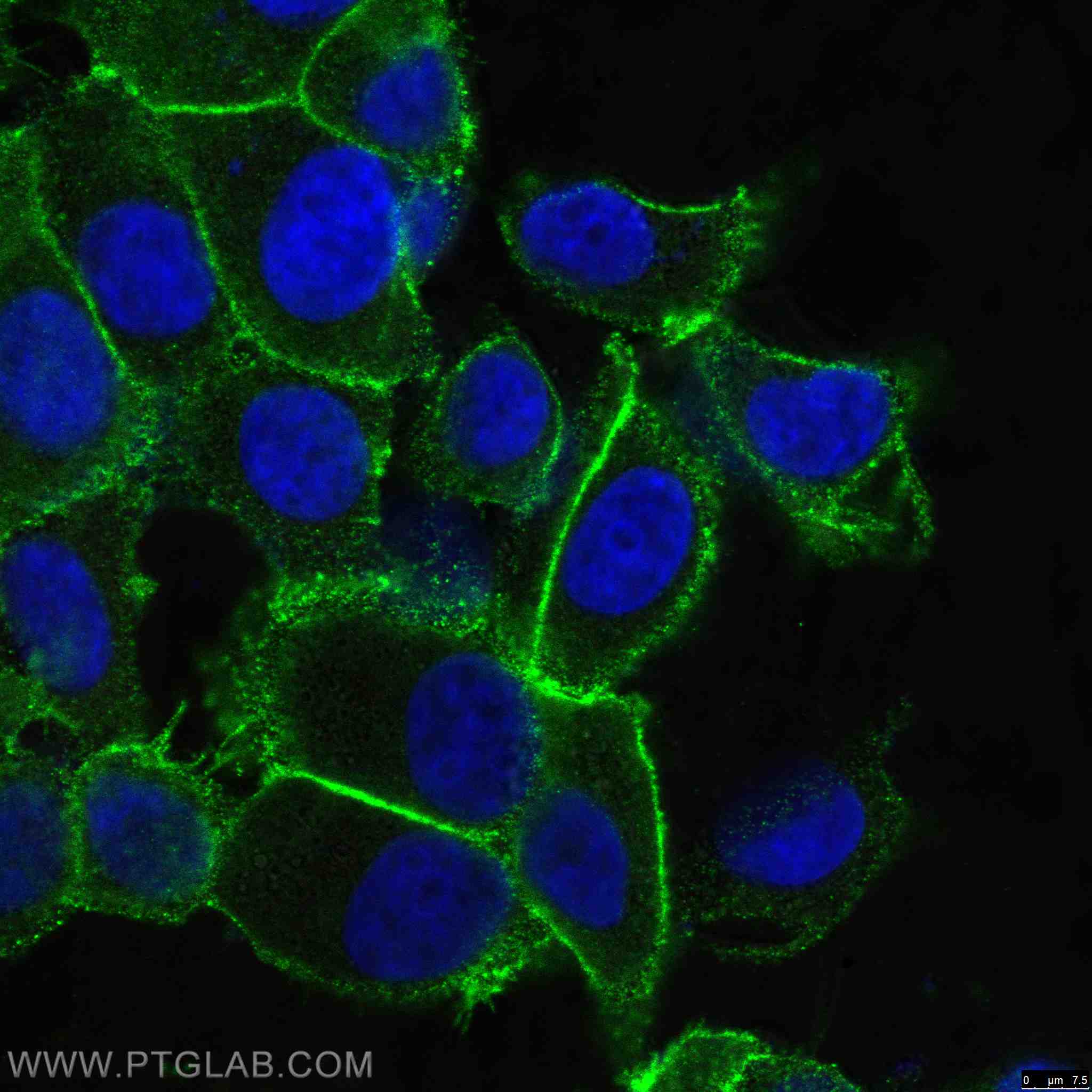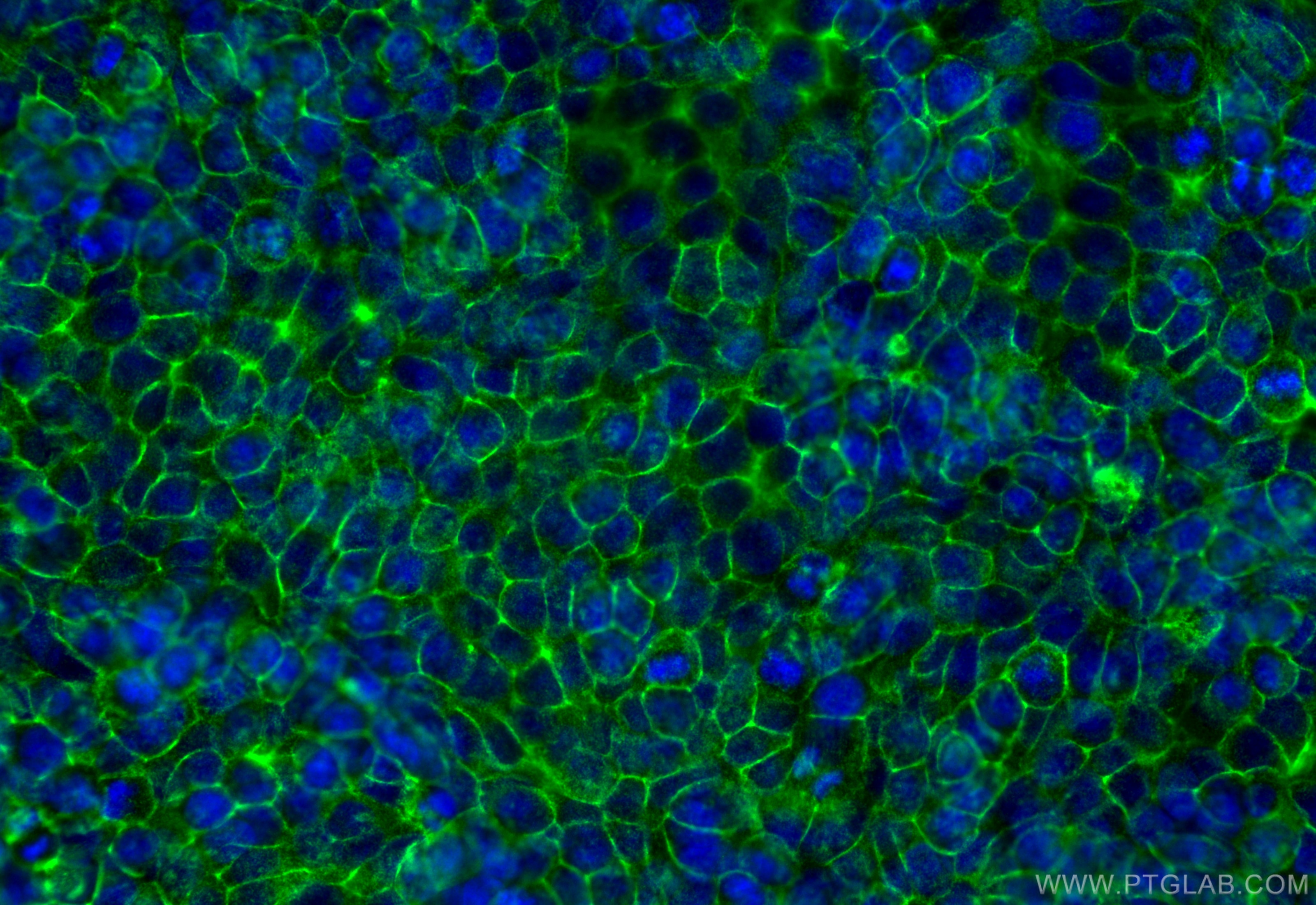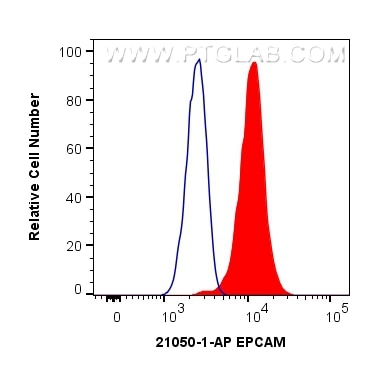- Phare
- Validé par KD/KO
Anticorps Polyclonal de lapin anti-EPCAM/CD326
EPCAM/CD326 Polyclonal Antibody for WB, IHC, IF/ICC, IF-P, IF-Fro, FC, ELISA
Hôte / Isotype
Lapin / IgG
Réactivité testée
Humain, rat, souris et plus (2)
Applications
WB, IHC, IF/ICC, IF-P, IF-Fro, FC, IP, chIP, ELISA
Conjugaison
Non conjugué
N° de cat : 21050-1-AP
Synonymes
Galerie de données de validation
Applications testées
| Résultats positifs en WB | cellules A431, tissu de côlon de rat, tissu de côlon de souris |
| Résultats positifs en IHC | tissu de cancer du côlon humain, tissu de cancer du sein humain, tissu de côlon de souris, tissu de côlon humain, tissu d'estomac de souris il est suggéré de démasquer l'antigène avec un tampon de TE buffer pH 9.0; (*) À défaut, 'le démasquage de l'antigène peut être 'effectué avec un tampon citrate pH 6,0. |
| Résultats positifs en IF-P | tissu de côlon de souris, cellules MCF-7, tissu pulmonaire de souris |
| Résultats positifs en IF-Fro | tissu de côlon de souris, |
| Résultats positifs en IF/ICC | cellules HT-29, cellules MCF-7 |
| Résultats positifs en cytométrie | cellules HT-29, |
Dilution recommandée
| Application | Dilution |
|---|---|
| Western Blot (WB) | WB : 1:2000-1:10000 |
| Immunohistochimie (IHC) | IHC : 1:500-1:2000 |
| Immunofluorescence (IF)-P | IF-P : 1:500-1:2000 |
| Immunofluorescence (IF)-FRO | IF-FRO : 1:200-1:800 |
| Immunofluorescence (IF)/ICC | IF/ICC : 1:50-1:500 |
| Flow Cytometry (FC) | FC : 0.50 ug per 10^6 cells in a 100 µl suspension |
| It is recommended that this reagent should be titrated in each testing system to obtain optimal results. | |
| Sample-dependent, check data in validation data gallery | |
Informations sur le produit
21050-1-AP cible EPCAM/CD326 dans les applications de WB, IHC, IF/ICC, IF-P, IF-Fro, FC, IP, chIP, ELISA et montre une réactivité avec des échantillons Humain, rat, souris
| Réactivité | Humain, rat, souris |
| Réactivité citée | rat, canin, Humain, porc, souris |
| Hôte / Isotype | Lapin / IgG |
| Clonalité | Polyclonal |
| Type | Anticorps |
| Immunogène | EPCAM/CD326 Protéine recombinante Ag15393 |
| Nom complet | epithelial cell adhesion molecule |
| Masse moléculaire calculée | 314 aa, 35 kDa |
| Poids moléculaire observé | 35-40 kDa |
| Numéro d’acquisition GenBank | BC014785 |
| Symbole du gène | EPCAM |
| Identification du gène (NCBI) | 4072 |
| Conjugaison | Non conjugué |
| Forme | Liquide |
| Méthode de purification | Purification par affinité contre l'antigène |
| Tampon de stockage | PBS with 0.02% sodium azide and 50% glycerol |
| Conditions de stockage | Stocker à -20°C. Stable pendant un an après l'expédition. L'aliquotage n'est pas nécessaire pour le stockage à -20oC Les 20ul contiennent 0,1% de BSA. |
Informations générales
Epithelial cell adhesion molecule (EpCAM, CD326) is a type I transmembrane glycoprotein that functions as a homophilic, epithelial-specific intercellular cell-adhesion molecule. In addition to cell adhesion, EpCAM is also involved in cellular signaling, cell migration, proliferation, and differentiation. EpCAM is highly expressed on most carcinomas and therefore of potential use as a diagnostic and prognostic marker for a variety of carcinomas, and has become a therapeutic target. EpCAM may occur in distinct forms due to glycosylation. (PMID: 20837599; 19249674; 21576002; 22647938; 12691820)
Protocole
| Product Specific Protocols | |
|---|---|
| WB protocol for EPCAM/CD326 antibody 21050-1-AP | Download protocol |
| IHC protocol for EPCAM/CD326 antibody 21050-1-AP | Download protocol |
| IF protocol for EPCAM/CD326 antibody 21050-1-AP | Download protocol |
| Standard Protocols | |
|---|---|
| Click here to view our Standard Protocols |
Publications
| Species | Application | Title |
|---|---|---|
Mol Cancer m6A methylation reader IGF2BP2 activates endothelial cells to promote angiogenesis and metastasis of lung adenocarcinoma | ||
Cell Metab Nicotinamide metabolism face-off between macrophages and fibroblasts manipulates the microenvironment in gastric cancer | ||
Cancer Cell Loss of Lkb1 and Pten leads to lung squamous cell carcinoma with elevated PD-L1 expression. | ||
Gut Cross-talk between the gut microbiota and monocyte-like macrophages mediates an inflammatory response to promote colitis-associated tumourigenesis. | ||
Autophagy Neutrophil-derived serine proteases induce FOXA2-mediated autophagy dysfunction and exacerbate colitis-associated carcinogenesis via F2RL1/protease-activated receptor 2 |
Avis
The reviews below have been submitted by verified Proteintech customers who received an incentive for providing their feedback.
FH Andrew (Verified Customer) (07-12-2024) | Got a clean band at the desired molecular weight for EPCAM on the first attempt of using this primary antibody for Western Blot. Also, there was very little background. Overall, very happy with this product.
|
